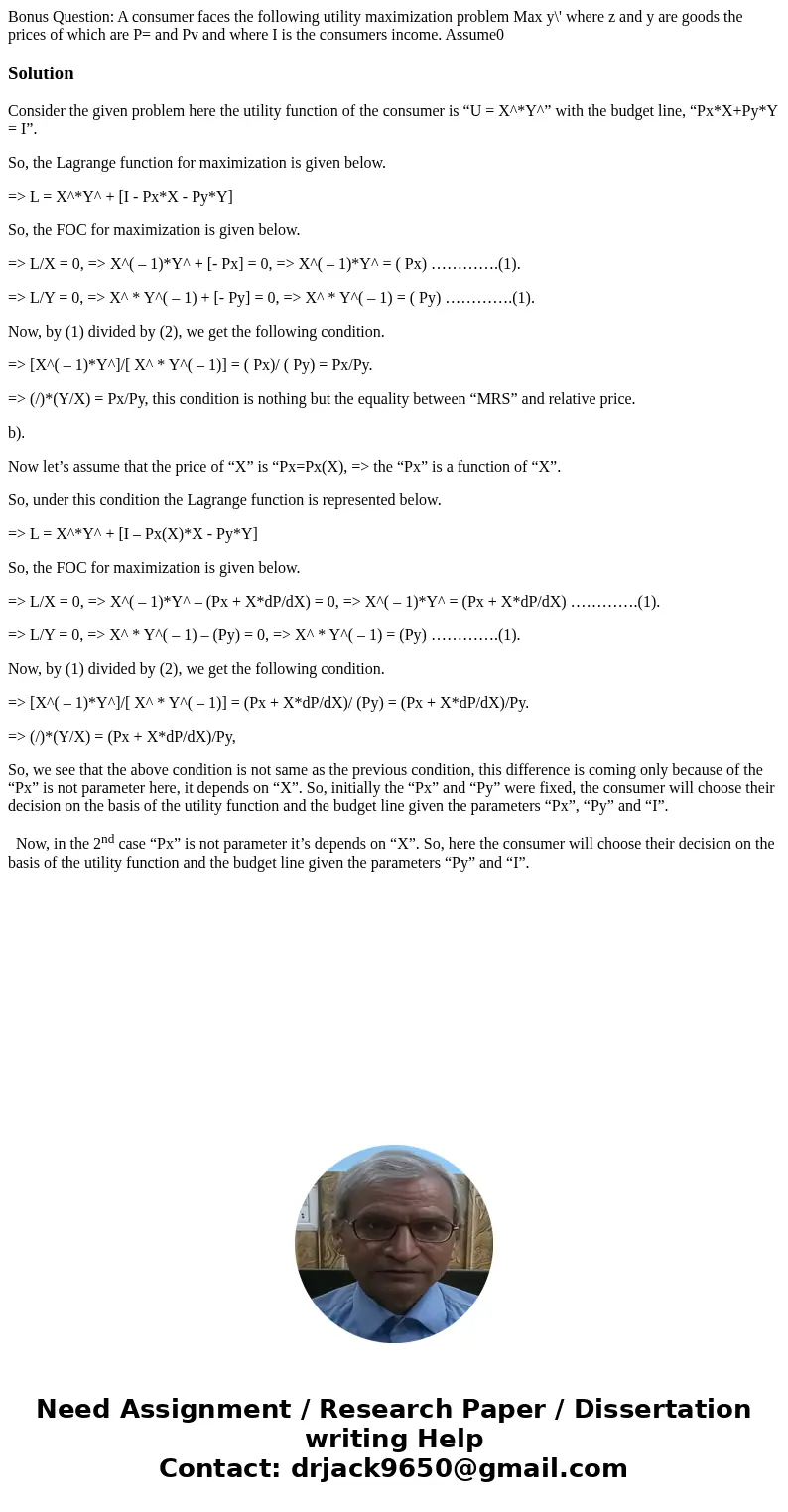Bonus Question A consumer faces the following utility maximi
Solution
Consider the given problem here the utility function of the consumer is “U = X^*Y^” with the budget line, “Px*X+Py*Y = I”.
So, the Lagrange function for maximization is given below.
=> L = X^*Y^ + [I - Px*X - Py*Y]
So, the FOC for maximization is given below.
=> L/X = 0, => X^( – 1)*Y^ + [- Px] = 0, => X^( – 1)*Y^ = ( Px) ………….(1).
=> L/Y = 0, => X^ * Y^( – 1) + [- Py] = 0, => X^ * Y^( – 1) = ( Py) ………….(1).
Now, by (1) divided by (2), we get the following condition.
=> [X^( – 1)*Y^]/[ X^ * Y^( – 1)] = ( Px)/ ( Py) = Px/Py.
=> (/)*(Y/X) = Px/Py, this condition is nothing but the equality between “MRS” and relative price.
b).
Now let’s assume that the price of “X” is “Px=Px(X), => the “Px” is a function of “X”.
So, under this condition the Lagrange function is represented below.
=> L = X^*Y^ + [I – Px(X)*X - Py*Y]
So, the FOC for maximization is given below.
=> L/X = 0, => X^( – 1)*Y^ – (Px + X*dP/dX) = 0, => X^( – 1)*Y^ = (Px + X*dP/dX) ………….(1).
=> L/Y = 0, => X^ * Y^( – 1) – (Py) = 0, => X^ * Y^( – 1) = (Py) ………….(1).
Now, by (1) divided by (2), we get the following condition.
=> [X^( – 1)*Y^]/[ X^ * Y^( – 1)] = (Px + X*dP/dX)/ (Py) = (Px + X*dP/dX)/Py.
=> (/)*(Y/X) = (Px + X*dP/dX)/Py,
So, we see that the above condition is not same as the previous condition, this difference is coming only because of the “Px” is not parameter here, it depends on “X”. So, initially the “Px” and “Py” were fixed, the consumer will choose their decision on the basis of the utility function and the budget line given the parameters “Px”, “Py” and “I”.
Now, in the 2nd case “Px” is not parameter it’s depends on “X”. So, here the consumer will choose their decision on the basis of the utility function and the budget line given the parameters “Py” and “I”.

 Homework Sourse
Homework Sourse